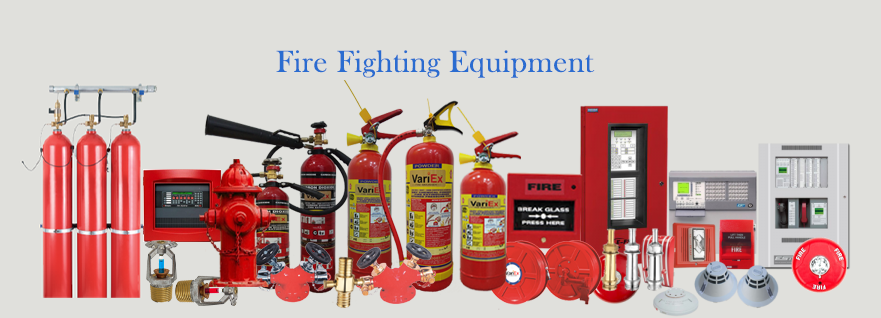![]()
Fire Immuniser
+91-7829629111
Email: info@variex.in
Varistor Technologies Pvt. Ltd.
Block-1, First Floor, Ardente Office One, Hoodi Circle, ITPL Main Road, Bengaluru, Karnataka 560048, IN
Fire Fighting Techniques
Fire fighting techniques are a set of skills and strategies designed to combat fires efficiently and safely. Whether in a residential setting, workplace, or public space, knowing how to respond to a fire emergency is crucial for protecting lives and property. In this comprehensive guide, we will explore various fire fighting techniques, including suppression methods, evacuation procedures, and fire safety practices.
1. Fire Suppression Techniques:
- Water-Based Methods: Water is one of the most common agents used for fire suppression. Techniques such as using fire hoses, sprinkler systems, and water extinguishers are effective for extinguishing Class A fires, which involve ordinary combustible materials like wood and paper.
- Chemical Extinguishers: Dry chemical and foam extinguishers are suitable for combating Class B and Class C fires, which involve flammable liquids and electrical equipment, respectively. These extinguishers work by smothering the fire and interrupting the chemical reaction.
- CO2 and Clean Agent Systems: Carbon dioxide (CO2) and clean agent suppression systems are used for Class B and Class C fires. CO2 displaces oxygen, suffocating the fire, while clean agents remove heat and interrupt the combustion process without leaving residue.
2. Evacuation Procedures:
- R.A.C.E. Protocol: The R.A.C.E. protocol (Rescue, Alarm, Contain, Evacuate) is a standard procedure for responding to fire emergencies. It involves rescuing individuals in immediate danger, activating the fire alarm, containing the fire if possible, and evacuating the area to safety.
- Emergency Exit Routes: Knowing the location of emergency exits and evacuation routes is essential for a prompt and orderly evacuation. Clear signage, well-lit pathways, and regular drills can help occupants evacuate quickly and safely during a fire emergency.
3. Fire Safety Practices:
- Preventive Measures: Fire safety begins with prevention. Keeping flammable materials away from ignition sources, maintaining electrical systems, and practicing proper storage and handling of hazardous materials can reduce the risk of fires.
- Smoke Detectors and Alarms: Smoke detectors and fire alarm systems provide early warning of fire hazards, allowing occupants to evacuate before the situation escalates. Regular testing and maintenance of these devices are essential for their effectiveness.
- Training and Education: Providing fire safety training and education to occupants ensures they are prepared to respond appropriately in the event of a fire emergency. Training should cover fire prevention, evacuation procedures, and the proper use of fire fighting equipment.
Conclusion
Mastering fire fighting techniques is essential for effective emergency response and fire safety. By understanding different suppression methods, evacuation procedures, and fire safety practices, individuals and organizations can mitigate the impact of fires and protect lives and property. Regular training, drills, and adherence to safety protocols are key to ensuring readiness and resilience in the face of fire emergencies.
Frequently Asked Questions
What are fire fighting techniques?
Fire fighting techniques are methods and strategies used to combat fires effectively and safely. They include various suppression methods, evacuation procedures, and fire safety practices.
What are the different types of fire suppression techniques?
Fire suppression techniques include water-based methods using fire hoses and sprinkler systems, chemical extinguishers for different classes of fires, CO2 and clean agent suppression systems, and specialized techniques like foam application.
How should I evacuate during a fire emergency?
During a fire emergency, follow the R.A.C.E. protocol: Rescue individuals in immediate danger, Activate the fire alarm, Contain the fire if possible, and Evacuate the area to safety using designated emergency exit routes.
What preventive measures can I take to reduce the risk of fires?
Preventive measures include keeping flammable materials away from ignition sources, maintaining electrical systems, practicing proper storage and handling of hazardous materials, and conducting regular fire safety inspections.
What should I do if I encounter a fire?
If you encounter a fire, remain calm and assess the situation. If it is safe to do so, attempt to extinguish the fire using the appropriate fire fighting equipment. If the fire is too large or spreading rapidly, evacuate immediately and call emergency services.
How often should fire safety training be conducted?
Fire safety training should be conducted regularly to ensure occupants are prepared to respond effectively in the event of a fire emergency. Training sessions may vary depending on organizational policies and regulatory requirements.
What role do smoke detectors and fire alarms play in fire safety?
Smoke detectors and fire alarms provide early warning of fire hazards, allowing occupants to evacuate before the situation escalates. Regular testing and maintenance of these devices are essential for their effectiveness in detecting fires promptly.
Where can I learn more about fire safety and fire fighting techniques?
You can learn more about fire safety and fire fighting techniques through fire safety courses, training programs offered by fire departments or safety organizations, online resources, and educational materials provided by regulatory agencies.
Final Say
We at VariEx.in or Variexonline.com have mastered the art of designing, installing, inspecting, and fixing automatic sprinkler systems with the help of our in-house team, which is capable of delivering the fire sprinkler services you need, whether large or small and at affordable cost.
To schedule a fire sprinkler installation, or you think our services could benefit your commercial property, contact us online or give us a call at, 7829629111










